Mutchilba to Laura – via Chillagoe, Mt Mulgrave Station, Maytown & The Old Coach Road to Laura.
Unlike most of our adventures which have often utilised 4wd capability simply to access country, this first part of our driving foray up Cape York has been quite specifically a 4wd challenge (but still through some very impressive & picturesque country)! Quite how much of a challenge had not really been apparent until we were past the point of no return!
First though this part of our journey began with a great deal of preparation & re-learning. With the exception of a 3 week mini adventure back in July ’20 we had been away from home, but in non travel mode since reaching FNQ (Far North Queensland) in September ’19. Throughout that time we have been house/farm sitting in 4 different locations, with a brief period of staying in Cairns with friends when Covid first reared it’s ugly head. A total period of 21 months ! During this unexpected ’non travelling period’ (Although to be honest it has still felt like travelling in many respects, just with longer stops) the car & Tvan were gradually ‘plundered & & emptied, & thus needed ‘recommissioning’. A process not unlike the initial packing process when we preparing to leave home. Made easier by established lists, but nevertheless a big task including the necessary culling of belongings accrued during our relatively stationary time.
Several things helped the process. First & foremost the hugely appreciated generosity of the owners of our ‘home’ at the farm. It has remained available to us for ‘as long as you like’ providing us with the necessities of living & a few added luxuries too. It was so good to know that once back from our Cape house sitting (see previous blog post) that we could undertake the preparation & recommissioning process at our own pace, which as it turned out was a relaxed bit by bit affair over around 3 weeks. The local op shops benefited from some of our culling whilst we also gained a few need new wardrobe items. from them. The young New Zealand couple we had met at Lockhart River, where they had been working temporarily at the airport also finished up their jobs there , came south to pick up a 4wd they had bought online, sight unseen, & were setting up there camping gear, so we were also happy to offload some of our no longer needed stuff to them.
We had arranged, whilst still up at Lockhart, to meet up with Josh & Jem again at the Laura Quinkan Dance Festival on the Cape at the beginning of July, but an earlier than expected end to their airport jobs saw them ready to travel, & so we arranged to travel together for a bit. Keen to take the ‘road less travelled’ we decided we would head up the Cape together via Chillagoe, then station tracks to the long deserted gold mining town of Maytown & then on to Laura via what is erroneously called ‘The Old Coach Road’! (OCR)
Advice from a fellow 4wd touring friend (Cheers Pearcey) was that the Old Coach Road was the antithesis of a ‘Road’, rather it was a track where it was wise to travel in company of at least one other vehicle. We read about the track, watched youtube videos & consulted other Tvan owners who had driven the OCR. Responses from others were mixed ranging from raised eyebrows & sharp intakes of breath through teeth, to reassuring comments about how it was quite ‘do-able’. Online descriptions called it the toughest/hardest/gnarliest track on the Cape. It was likened to the hard tracks in the Victorian High Country, & one description even suggested it might be the most difficult track in Australia! However we recalled reading similar hyperbole about both the Munja Track in the Kimberley & parts of the Gregory NP in the Northern Territory, both of which we enjoyed & were well within our & our vehicle’s capabilities. We decided that mostly the ‘scary’ descriptions contained high levels of machismo & reassured ourselves that we had never heard of anyone dying on the Old Coach Road & consequently we should check it out for ourselves.
For Josh & Jem, their 1994 80 series Toyota Land Cruiser was brand new to them, as was their experience of the huge expanses of the Aussie bush. Both had fairly minimal 4wd experience & neither had seen much Australian wildlife. ‘Introducing’ them to the likes of kangaroos etc in the wild would be a delight.
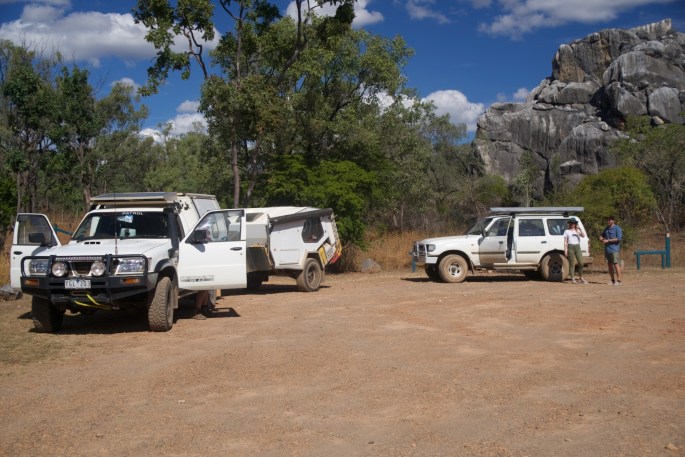
Pleasingly, to both they & us, the seemingly never ending bush, as we headed inland, away from the more populated coast was something we all appreciated & marvelled at. The sealed road took us almost to Chillagoe, where we enjoyed a bit of caving in the extensive jagged limestone formations (once under sea reefs), after enjoying lunch at the local swimming pool, a picturesque little swimming hole complete with little waterfalls & shade courtesy of large paperbark trees, in a river on the outskirts of town. Camp for the night was also on the outskirts of town in a lovely spacious ‘eco- bush camp’ with possibly the best appointed & scrupulously clean long drop toilet we have ever encountered. A visit during the early hours of the morning gave me quite a start & a good laugh. In the middle of one of the provided rolls of toilet paper was a large black spider, & I was suddenly far more awake than I had expected to be. Bloody jokers! It was a rubber one. I left it there for the next users ’enjoyment’ but sadly it had ‘moved on’ later in the morning before we departed. Back in 2008 we had found Chillagoe a lovely welcoming & friendly place to visit, but far less so when we stopped there briefly last year. This time, again the welcoming warmth of locals shone through, confirming for us that the scowling grumpiness experienced in 2020 had coincided with reduced travel restrictions in the relatively early Covid era, where little remote towns like this badly needed tourist dollars from potential, & thus frightening plague carriers.
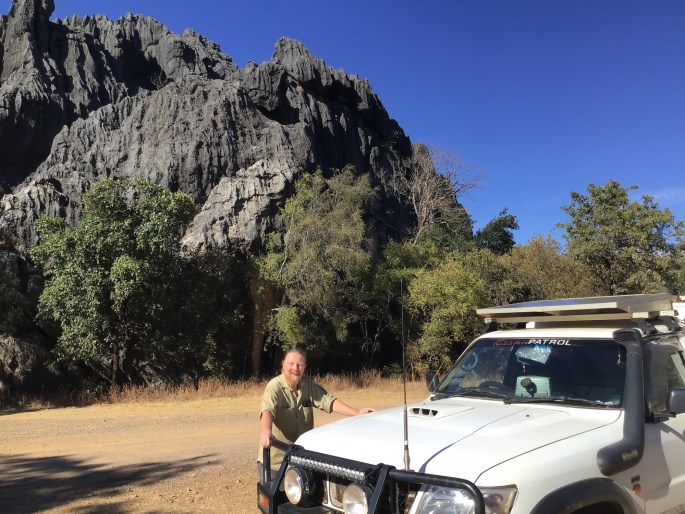
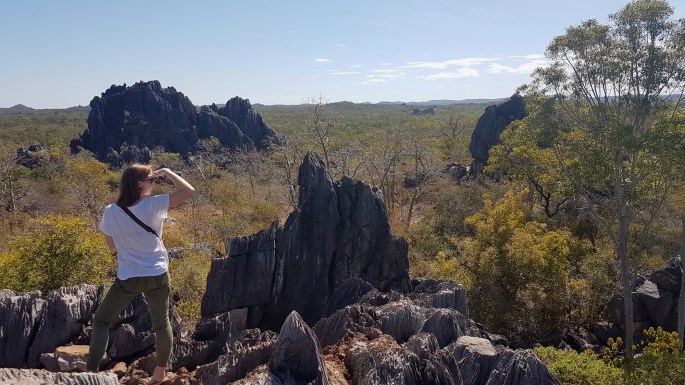
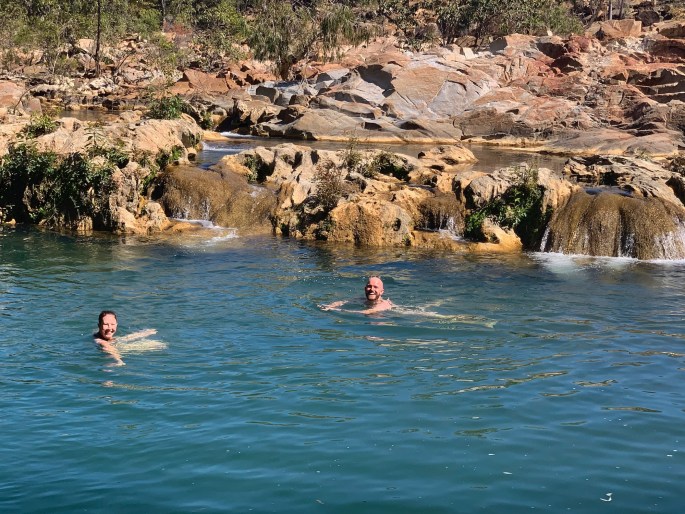

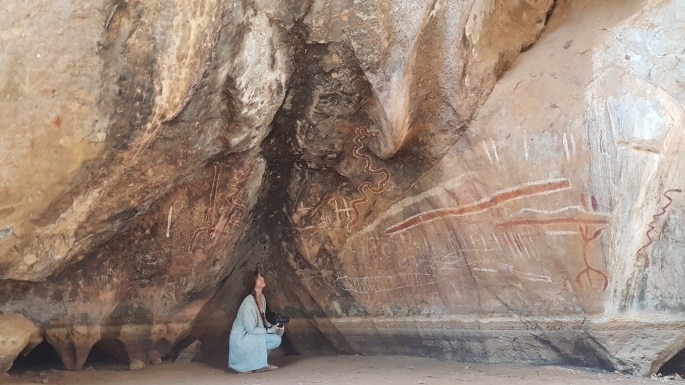
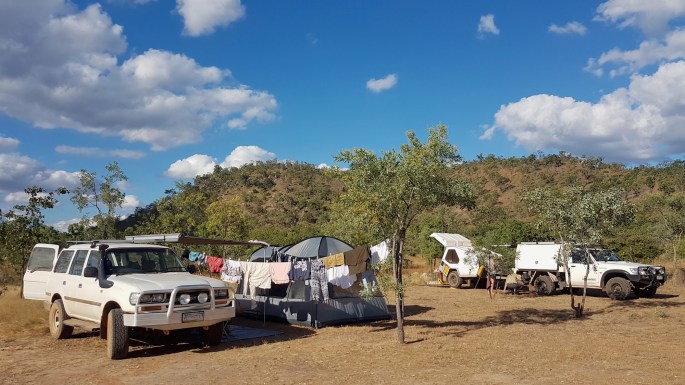
Leaving Chillagoe on the Burke Developmental Road, a dirt road which we have travelled on several times previously, we found it in the best condition we have experienced. Lots of dust of course but virtually no corrugations, a pleasant surprise. Around 100kms before we turned northward onto far narrower station tracks, but not before we had enjoyed several sightings of groups of Brolgas, & some horseback cattle mustering on a station close to the road. Jem called through on the UHF radio “real cowboys”. “Sure are” I replied.
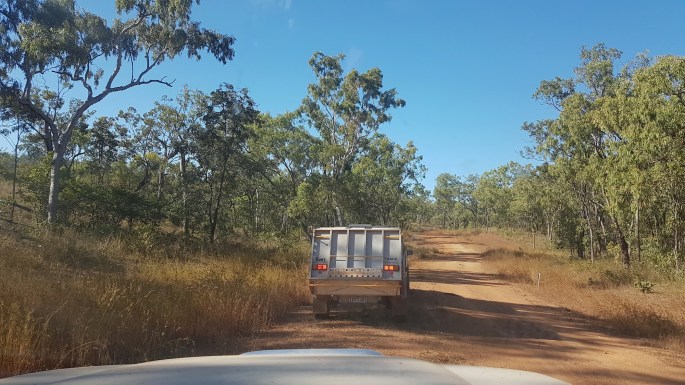
The station tracks are much more ‘my thing’. I love the two wheel tracks which take us through the bush, & are more often than not far nicer than big wide dusty roads or sealed roads. We all harboured a concern however. MrsTea & I had travelled these particular station tracks in 2020, & knew they were leading us to a concrete causeway crossing of the Mitchell River. The concrete had been dry when we last drove over it, but we had been unable to ascertain what current river levels were like after what had been quite late wet season rains on parts of the Cape. If it were uncrossable we would have to retrace our tracks back past Mutchilba & take the ‘road more taken’ up the Cape. An added several hundred kilometres we didn’t want . Sighs of relief when we found the causeway dry & clear. Water levels were certainly higher that when we had last passed that way, but dry is dry! We pulled up for a very pleasant lunch stop on what was now the far bank, but which just weeks earlier had obviously still been mid river. All was good. Now we were ‘out there’ & enjoying the warm isolation, the views & the sound of the rushing water & birdsong. Sometimes we (everyone) miss these ’now’ moments, but sitting by the Mitchell we didn’t.

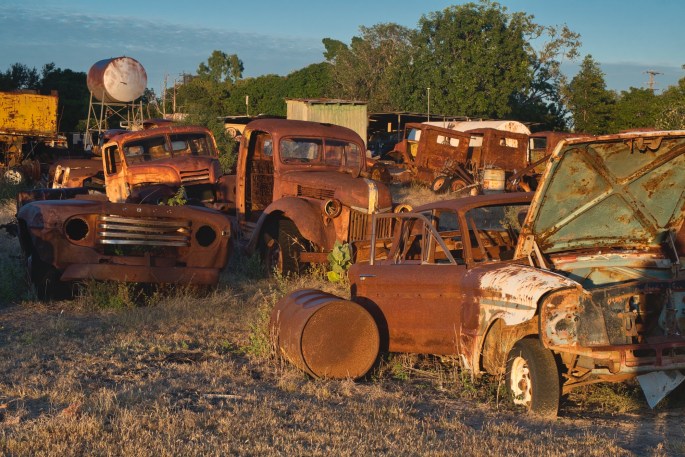
Continuing north from the river the narrow track became more undulating, constant ‘up’s’ followed by constant ‘downs’, many of which carried small creeks, some dry, some still running, adding interest to our surroundings. Our Hema (brand) maps told us we would turn east along a ‘lesser’ track to Maytown, shortly before reaching Palmerville Station & before crossing the Palmer River. But the map was wrong, resulting in us driving back & forth over a 5 km stretch of road, including crossing the Palmer River, a number of times. Not a difficult or deep crossing, but complacency managed to get the better of me when I found water up at bonnet level briefly having taken a different line & discovered a deeper hole. We eventually found the track which was marked on the Hema map, with a tree covered sign saying ‘Telstra Road, No Public Access’. Using a different mapping system we discovered another track north of Palmer River, which appeared to go to Maytown. When we got to it, sure enough it was signposted to ‘Maytown’. However this road was not on the Hema maps at all! Exploroz EOTopo maps score 1 …. Hema Maps score nil. Disappointingly this is not the first of this type of occurrence with Hema – Australia’s market leader in maps. A few kms further along this track we again crossed the Palmer River, a shallow crossing & set up camp on the far bank. Josh & Jem’s first ‘free camping’ in the Aussie bush. A moment not lost on them & a reminder to us of how lucky we are to live in a huge country where such things are possible.
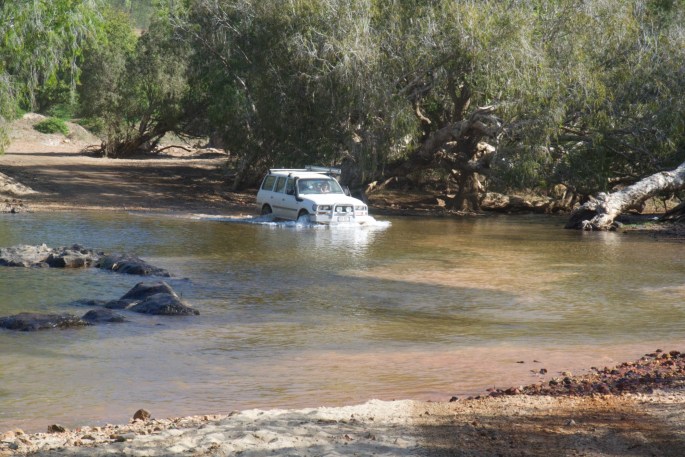

By now were beginning to establish a bit of a routine, & without naming it 9am seemed to be morning departure time, allowing for a leisurely breakfast & packing before heading off to find what the new day would bring. This day saw more good quality tracks, albeit becoming ever more winding, with longer & steeper hills. On occasions the steepness saw us using the low range gearbox to pull our Tvan up the hills, but far less weight, lower gearing & the 1Hz motor (non turbo 6 cylinder with heaps of low rev torque) of the Land Cruiser saw Josh & Jem still managing easily in high range. The qualities of this motor were yet to show just how good it is for off road work. It would really shine over the next few days.
We crossed several more creeks & a wider river just before Maytown which we think may have still been the Palmer river. A rocky crossing.
Maytown itself is an historic town, or rather an historic ex town site. It was once the main town of the Palmer goldfields & the largest town on Cape York, boasting a maximum population of 24,000 to 30,000 (depending upon information source) with numerous gold mines & alluvial sites during the gold rush which took off in the early 1870’s & much of the town having been built within the first half dozen years, which in addition to the thousands of basic dwellings (tents & tins sheds) included 12 hotels, two with extensive billiard rooms, butchers, bakers, post office etc etc, along with the the handcraft industry to support the mining. The town was finally abandoned in 1942 & today very little remains other than the footings of a few buildings & the huge metal mine remnants at a variety of mine sites & batteries where hand dug rock was pounded by enormous steel driven ‘pile drivers’ & the resulting crushed rock then mixed with water from nearby creeks to form a slurry allowing for the extraction of the all important gold. It would have been a noisy, filthy & very tough existence in the hot northern Australian winters & almost as hot wet seasons . And this is mountain country, rocky & steep. Easy to envisage weary, dirty men slowly trudging back to their rudimentary dwellings after many hours of labouring each day, to cook, eat & sleep before doing it all again the next day. They must have been tough back then! And alongside all of this a ‘frontier war’ was taking place. It was an ugly & violent time where the local Western Kuku Yalangi people were shot on sight & miner’s bodies occasionally found with multiple spears embedded in them. Not too hard to imagine that the lawless nature of the community, saw a significant self preservation spirit above & beyond any sense of community spirit. It was probably wise to keep any gold finds secret as far as possible.
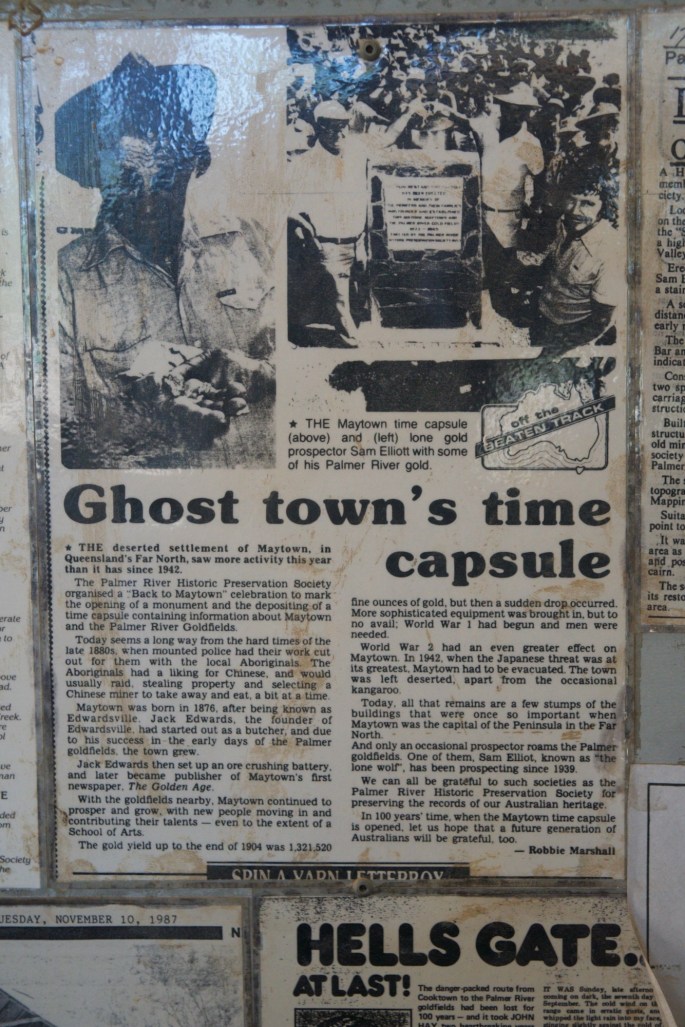
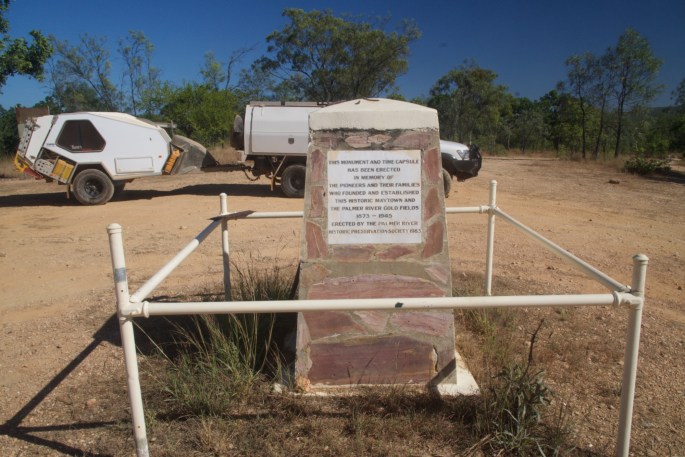
The country where Maytown stands/stood, is at the northernmost reach of the Great Dividing Range which runs down the entire eastern side of Australia. It felt significant to us to be there somehow, having lived for a couple of decades several thousand kilometres south of Maytown in the Range’s southern extremity, in Gippsland Victoria.
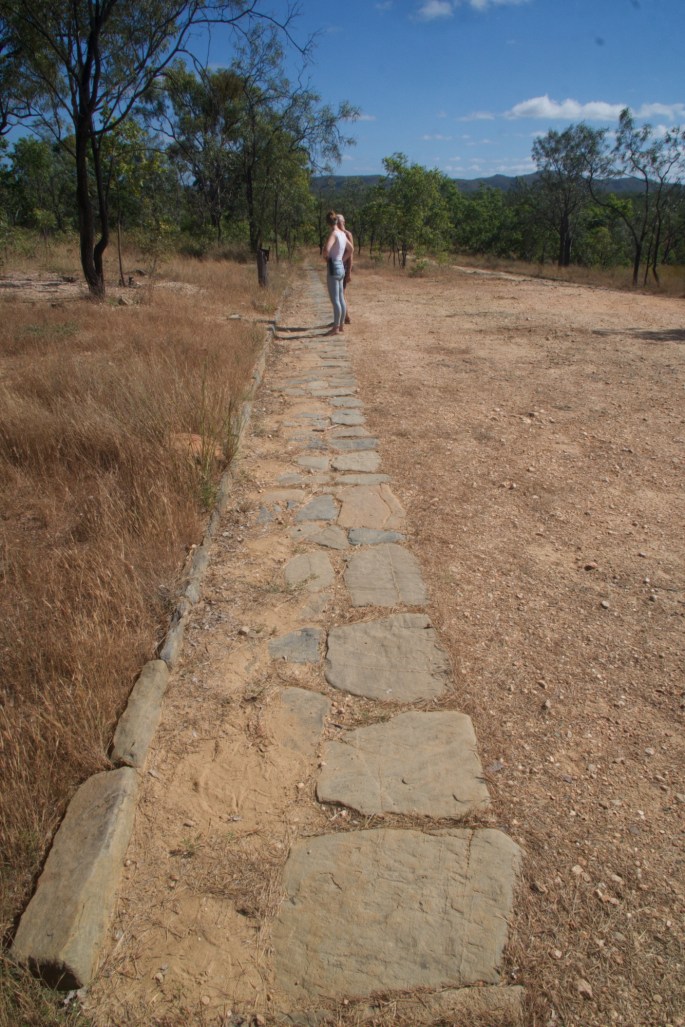

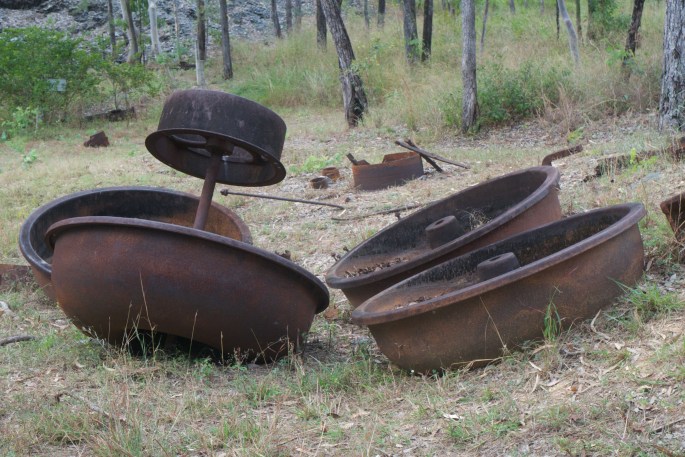

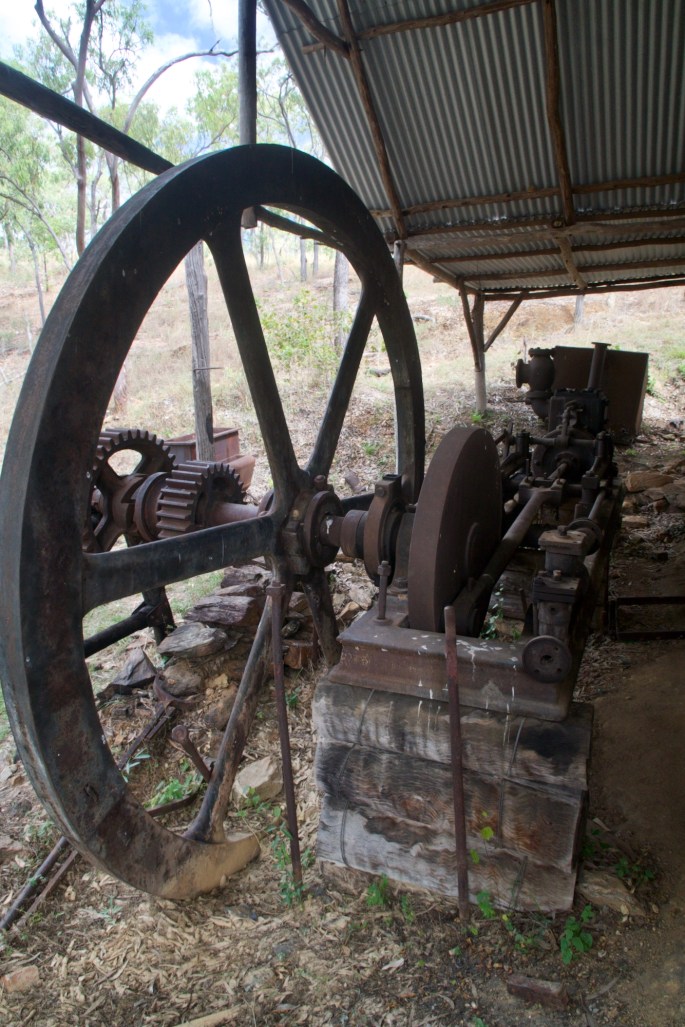
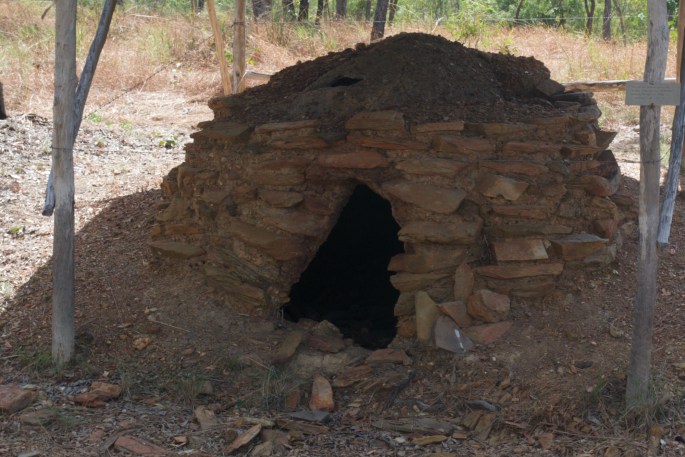
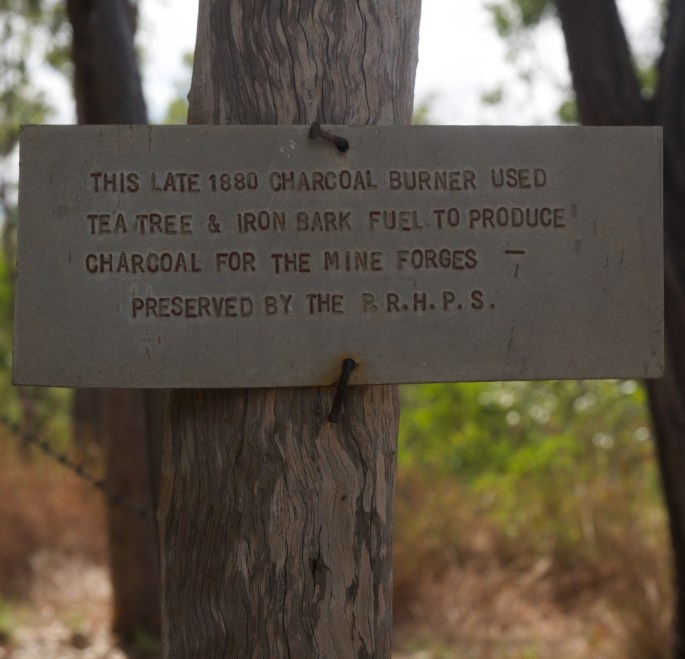
Our route leaving Maytown is known as The Old Coach Road, & reputed to be a tough track to drive, compared by some to the most difficult 4wd tracks down south in Victoria’s ‘High Country. This track through the northern high country has many online descriptions which gave us an indication of what to expect, words like the ‘gnarliest/toughest/roughest/most difficult’ track on the Cape, which on Youtube were inevitably accompanied by overly dramatic music & showed footage of what such video’s usually show – the ‘juicy bits’ to demonstrate the machismo prowess of those who had ‘conquered’ it. We had previously watched similar videos of people driving the Munja Track in the Kimberley, WA & had found driving that track a most enjoyable, & importantly far less difficult than online ‘bravado merchants’ had suggested. So after driving around the Maytown area itself, down numerous small tracks, which at times were challenging enough to be enjoyable without significant risk, we felt psychologically prepared & confident to give the Old Coach Road a crack after a pleasant night camped on the riverside at the bottom of a steep, rocky & washed out narrow track.

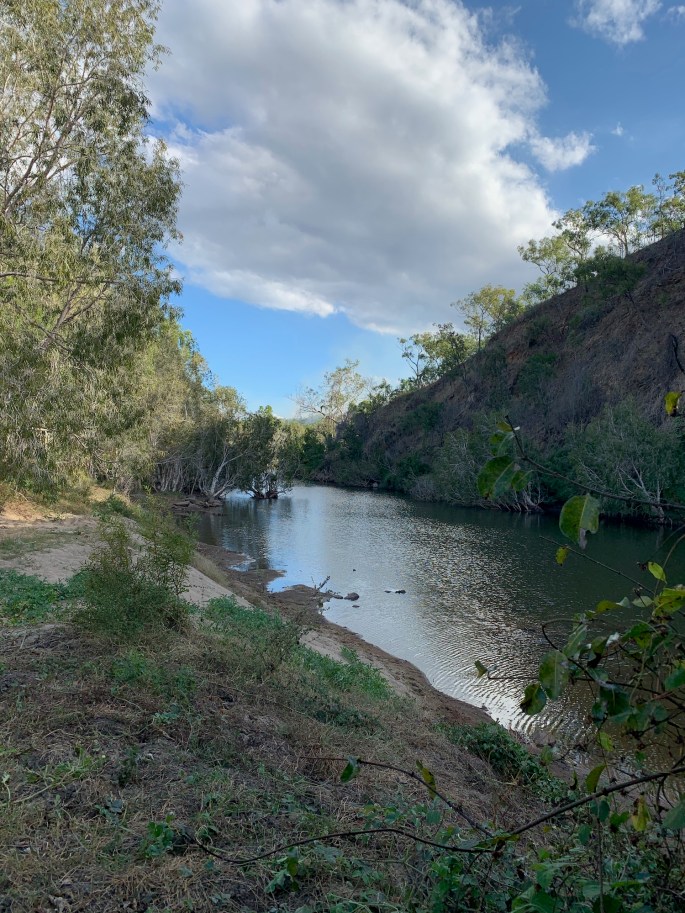
In the morning we packed, & made it back up the track without difficulty & set off along the Old Coach Road with a keen sense of anticipation. Within a fairly short space of time we realised that back in Maytown our belief (& hopes) that the tracks there had given us a good taste of what was to come were misplaced!
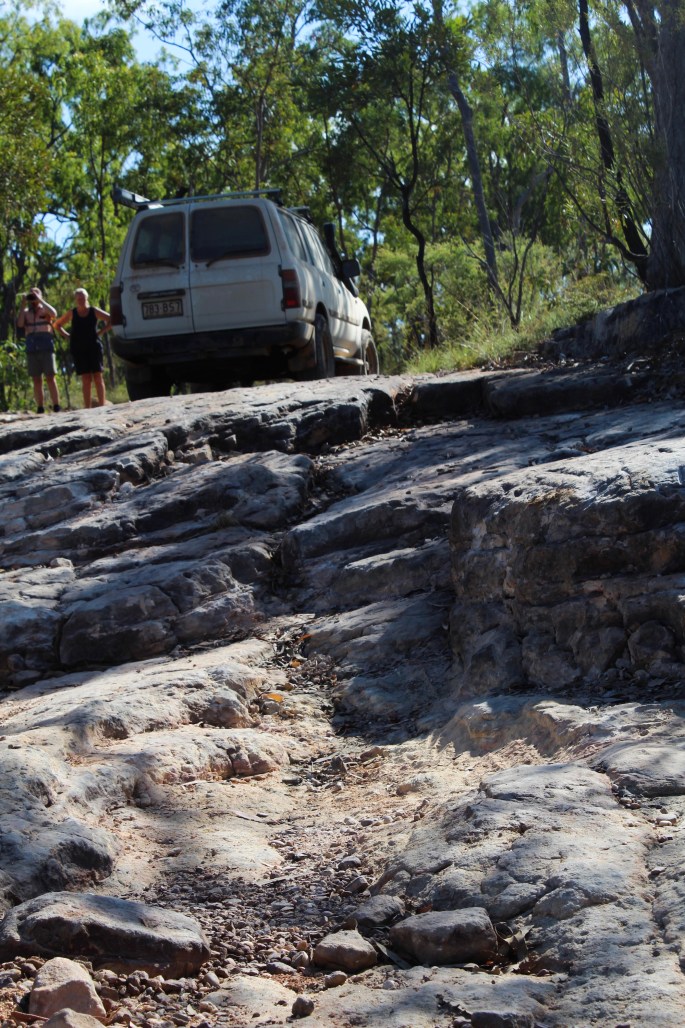

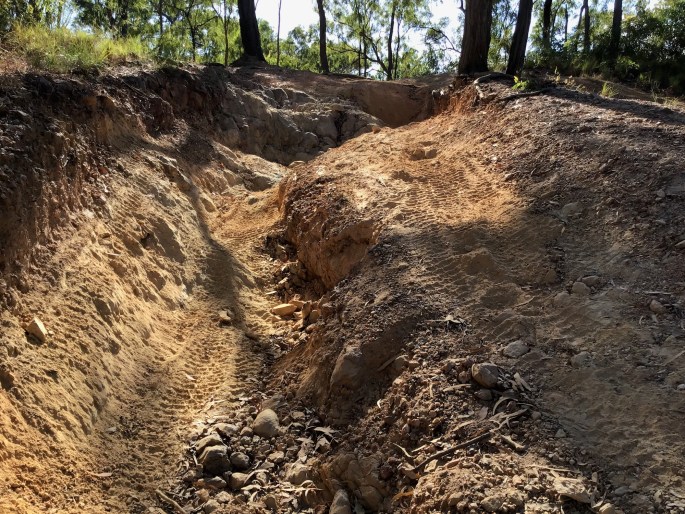
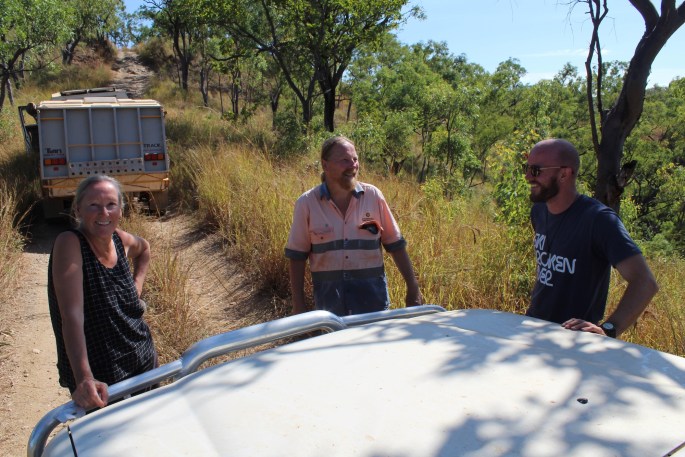
The Old Coach Road made our previous experience of driving the Munja track (& all the others we have driven to date) look like kindergarten 4wd’ing. This was very steep & rocky country. We had read about ‘rock steps’, but now with hindsight laugh at the naievity which had formed mental pictures in our minds of driving up something like ‘even’ staircases. The climbs & rock faces were far from even , this was ‘rock & roll central’ all whilst attempting to climb what on occasions appeared unclimbable. “Why didn’t we turn around & go back” you might ask. Well by the time we reached somewhere with sufficient space to turn around, the thought of driving back over what we had already climbed & descended held sufficient fear factor, which when combined with a tad of optimism that what lay ahead couldn’t be any worse, pressing on seemed like the best thing to do. There were in fact very few places on these mountain-side goat tracks to turn around. The terrain, all in 1st gear low range, was unrelenting. This made the driving exceptionally tiring as concentration could not be relaxed for a moment. Our friends Josh & Jem, neither experienced 4wd’ers coped remarkably well in their 80 series, bog stock, Toyota Land Cruiser, purchased just a few weeks earlier & the only modification made for the trip was to fit some front recovery points in case we needed to winch them up sections they couldn’t manage. Our car, with it’s two inch lift & front differential ‘E-locker’ & a front winch seemed on paper to be far better set up for this sort of use. The huge difference was that we absolutely needed our set up to pull our Tvan up those rocks & would never have made it without. Josh & Jem’s Cruiser with it’s beautifully torquey non-turboed 6 cylinder 1HZ diesel motor & significantly lower gearing than than our turboed (but similar engined) Patrol was the perfect vehicle let down only by ground clearance. They ground their way up & down the rocks at a slower pace than was required to pull the Tvan along behind us. A few times they found the vehicle’s limits but slow & steady & an occasional different second line got them through with only minor damage (a bent side step). We were driving ahead of them, so knowing we had ‘got through’ gave them a degree of confidence.
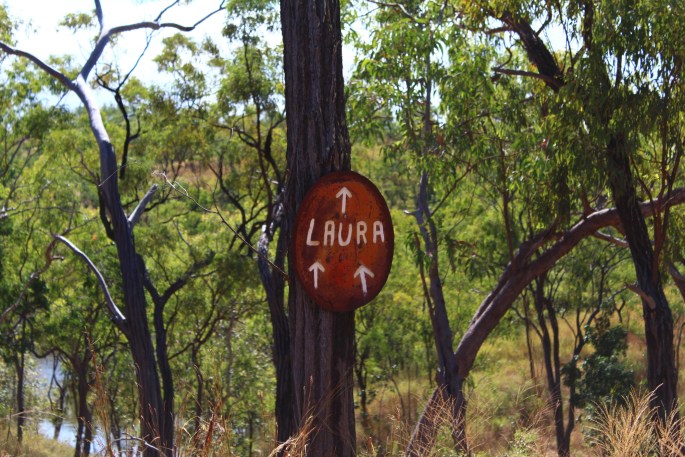
Towing a trailer changes everything, not only does it require a bit more momentum at times, even with the diff lock, but the weight of the Tvan on the tow hitch changes the vehicle’s handling quite significantly in these conditions, with the front of the vehicle tending to bounce more & on a few occasions to suddenly be pulled completely off line. Heart in the mouth stuff! However to give credit where credit is due the Patrol (which loaded for touring & together with the Tvan would have weighed several tonnes more than the Cruiser) managed the job remarkably well & more than once dragged us up (or down) over obstacles the ‘wrong’ way when we had been pulled ‘off line’ or driver error had seen a poor selection of ‘line’. There were times when video or photographs would have been very dramatic, but when the car is at such an angle on one side, & the Tvan behind is at a similar angle on the other side & forward motion reverses this in an instant, with driver & photographer holding on to prevent being thrown from one side of the cab to the other, the niceties of recording the action were not only impossible, but a long way down on the priority list (where survival at that moment was the only priority!).
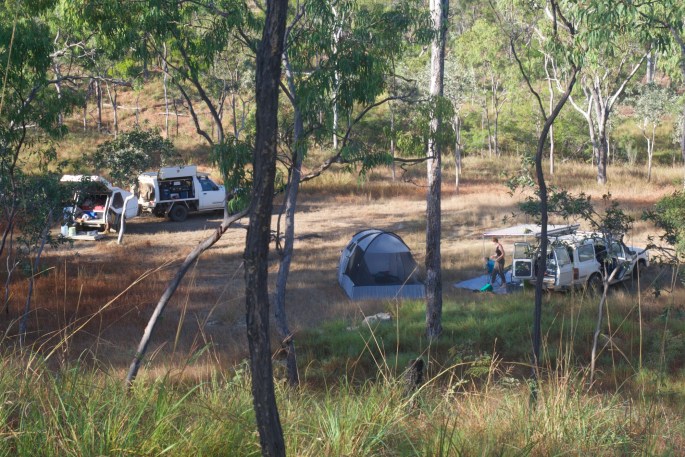
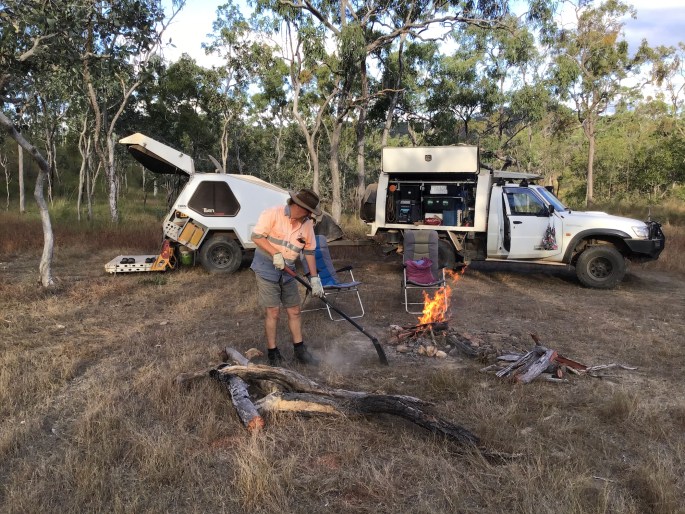
Generally video or photographs were ‘grabbed’ where possible, but opportunities were few & far between. The climbs were mainly too long, steep & arduous, for anyone to walk ahead to record progress, & stopping the vehicle ‘part way up’ felt unsafe in most instances. Not hills to stop on mostly. The video in this post will hopefully give you an idea even though it misses the ‘dramatic’ bits.
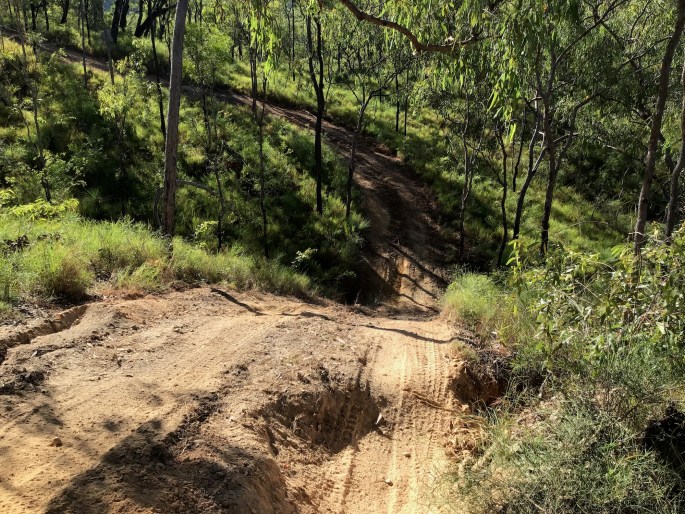
We left Maytown around 9:30am & pulled off the track into a pleasant (& rare) flat area to camp in the early afternoon. We were exhausted & had covered only around 12kms! Our hands were shakey with the adrenaline, but our sense of accomplishment ran a close second. We still had no idea of what was yet to come. It was here, prior to getting a camp fire going, that the damage to the side step of the Cruiser was examined, & temporary repairs made to hold it in place with tie wire. On the Patrol leaking water was discovered, a result of a hose to an external drinking water tap having been pulled. The cause – a significantly bent mudguard support & mudguard. There had been one occasion where the car had been over on a severe angle (with the ground just inches from the driver side window) & had then dropped back down with an almighty crash. It hadn’t sounded good at the time, but stopping to inspect wasn’t an option. As it turned out it had also put a pretty good dent in the end of the exhaust pipe, & buckled a section where a jerry can is carried behind the Tvan wheel & severely bent the alloy hinge mechanism of the Tvan’s rear door. This damage to the Tvan was not discovered until the end of the day’s travel 24 hours later though. We fixed the water leak & relaxed. Looking back, we probably should have made closer inspections for damage when we crested that hill & had a short section of flat track to stop on. We had found one of the over-centre catches which hold the metal fold down tent floor in place when travelling, had opened (despite there being a clevis pin in place to prevent it opening) leaving the floor precariously flailing around unsecured. Clearly (although not at the time of discovery) a result of a severe impact when the Tvan wheel dropped off a rock ledge. We think the same one which caused the damage to the car.
Sitting around our camp fire, a realisation had dawned upon us. We had set out on the track believing that if Josh & Jem were to become stuck that we could winch them out of trouble. Now we realised, again, our naievity. The tracks in the main were too steep & narrow for two cars to pass each other, let alone to turn around on. The idea of us being able to continue on for what could be kilometres to find somewhere to unhitch the Tvan, turn around & drive back down to Josh & Jem to use our front mounted winch to pull them up, & then to reverse all the way back up a mountainside that was difficult to drive when I could see where we were going …… was simply an impossibility.
For readers unfamiliar with Australian distances & geography, we were also a ‘bloody long way from anywhere’ with no possibility of calling in a recovery service. We had seen one other group of 4 cars on the track that day, but had no idea where they were or whether they would have taken a different route. Whatever the circumstances might turn out to be, the only resources we could rely on would be ourselves (& our satellite phone & epirb rescue beacon in a life & death situation). This situation at the end of our first day on the track was brought home to us very clearly, but we had put ourselves there, we hoped we were through the worst of it, but we had no option but to continue on the next day with as much optimism as we could muster.
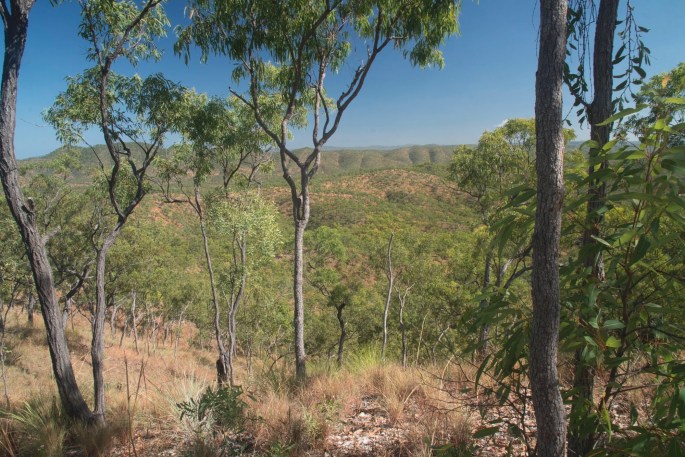
The second day for the first half of it was much the same as the first, rocky, steep & unrelenting, & then it got easier, just a little bit easier. We generally agreed that doing the track in the opposite direction (North to South) would have been harder, but only because unlike our experience the hardest part would have been at the end when we most exhausted. 50 odd kms over two days plus a few more to where we camped for a couple of nights where the now very ordinary & beautifully level dirt road crossed the Little Laura River. Here we lazed in the warmth & dunked ourselves in the water. (whilst keeping an eye out for traffic in case they failed to see us in the water). I think all four of us agreed that we had had a fantastic experience, but that once was enough! The track is more than enough to satisfy the real hardcore 4wd fraternity, but I’m sure those with significantly greater ‘rock-crawling’ experience would derive more pleasure from it than we did. Hindsight is a wonderful thing. …… I believe it will be obvious to all reading this that we took on a challenge which we had not fully appreciated until it was too late……. but we got ourselves through mostly in one piece & are still here to tell the tale. The scary bits were indeed scary, but the experience has been added to our repertoire & increased our confidence in both our driving ability & the ability of our vehicles. I expect at some future date I may be tempted to play it all down in a boastful sort of way, as I think many do, but here ‘on record’ is the real story. Ha ha. How horse drawn coaches could ever have been driven across that route is totally beyond me! Sure they may not have had the sort of severe ruts & washouts we had to contend with, but the rocks would have been the same.
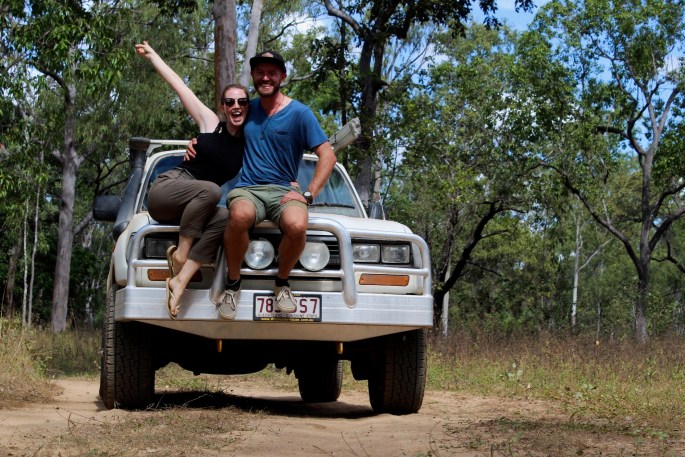


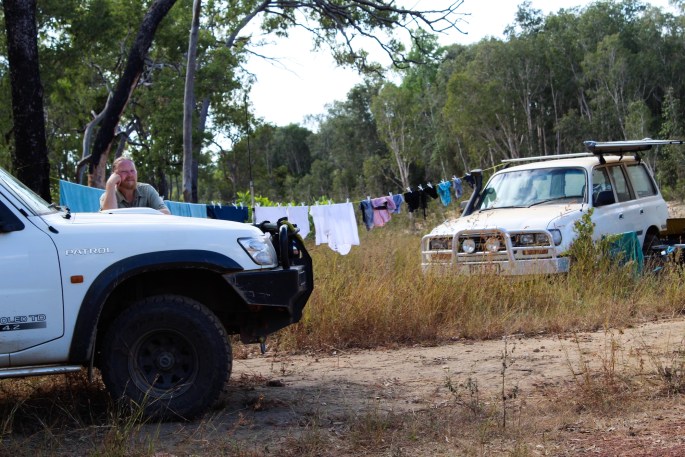
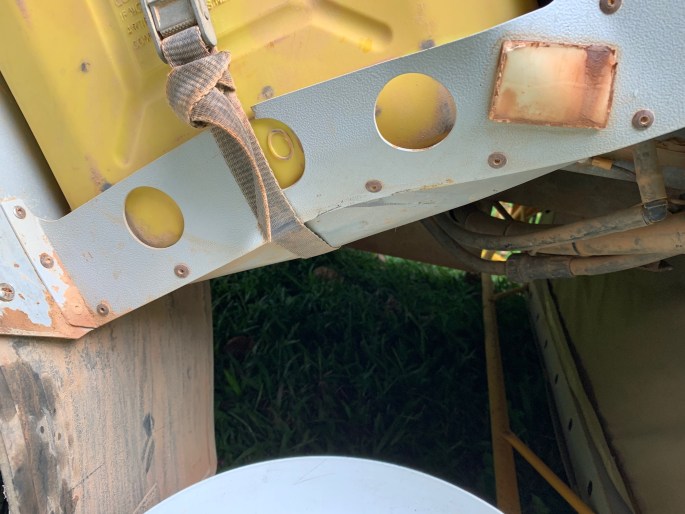
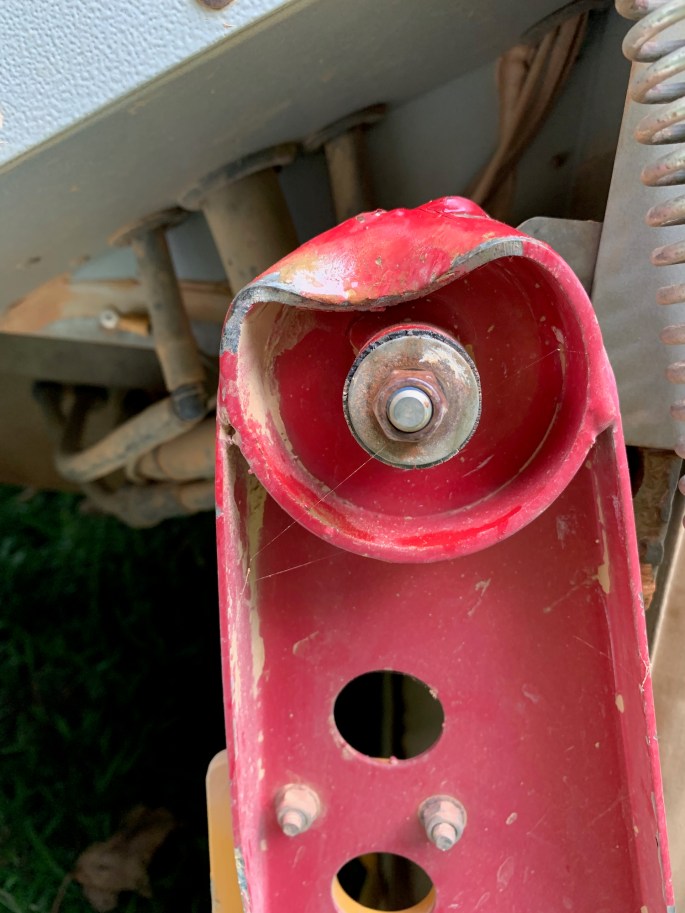
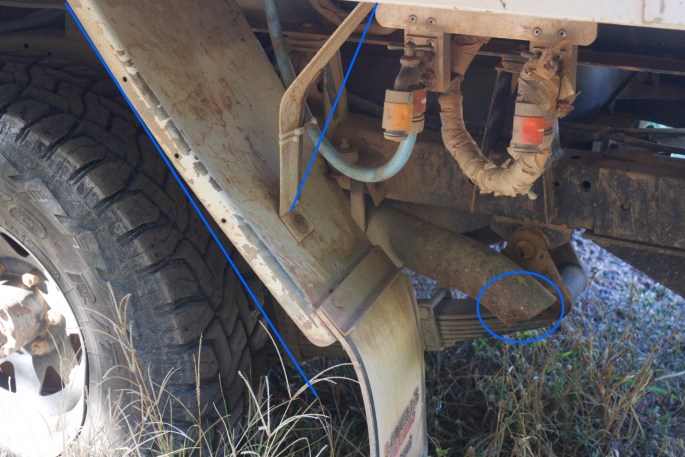
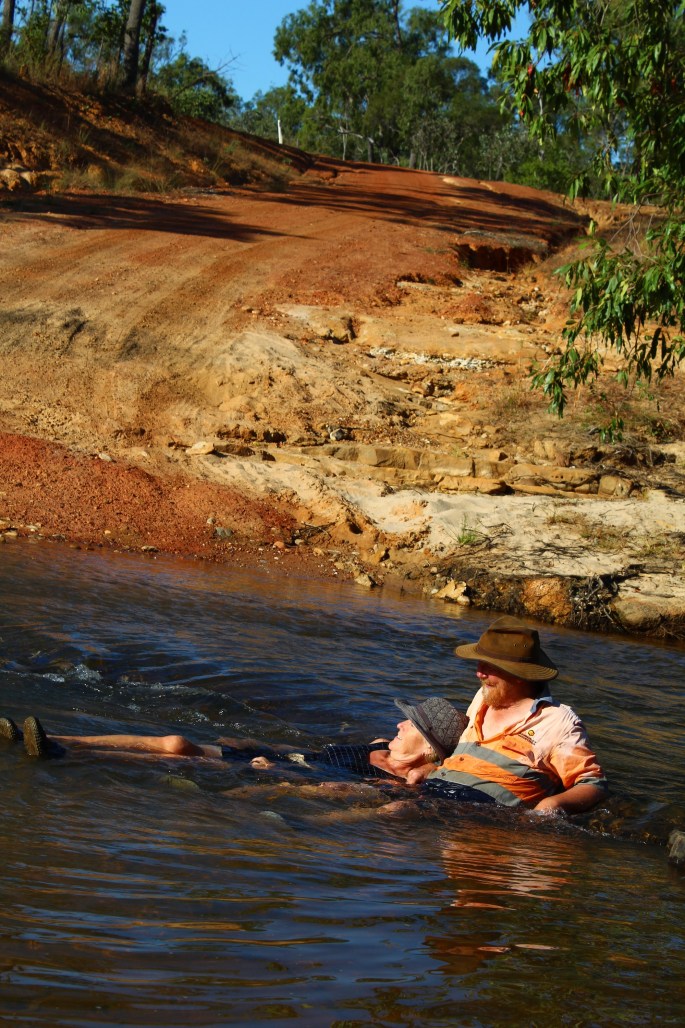
Leaving our delightful river crossing camp we drove first to the small township of Laura, where we stopped only briefly as we will be back there again at the beginning of July, as volunteers at the Laura Quinkan Dance festival. We marvelled at the billiard table smooth bitumen road from Laura to Cooktown, capable of carrying us further in an hour than we had just managed over 4 days. This was ‘virgin country’ for us, so we were ‘all eyes’ soaking in the varied agricultural enterprises around Lakeland, & stopping to replenish our fruit & veg supplies from farm roadside stalls. Rather than going into Cooktown to see how it had changed from our previous visit in 2008 we stopped 45kms short, pulling into the iconic (& touristy) Lions Den Hotel for the luxury of a pizza & a beer, in Helensvale before travelling another dozen kms to reacquaint ourselves with an old favourite camping spot in the top end of the Daintree rainforest, the oddly named ‘HomeRule’ just out of Rossville. A unique property, a large clearing in the midst of dense rainforest alongside the Wallaby Creek – a creek which provides the property with 24/7 hydro electric power, which fits beautifully with the now deceased owner’s vision when he developed the campground along ecologically sustainable principles long before most folk had heard of such things. It is a wonderful oasis which opens up in front of you at the the end of a 3.5 km drive through a rainforest ‘tunnel’ of trees. Today will be our 4th day there & we are out at the gorgeous & idyllic Quarantine Bay, a few kms south of Cooktown, in the Mt Cook National park , which makes a pretty unbeatable ‘blogging office’. :).
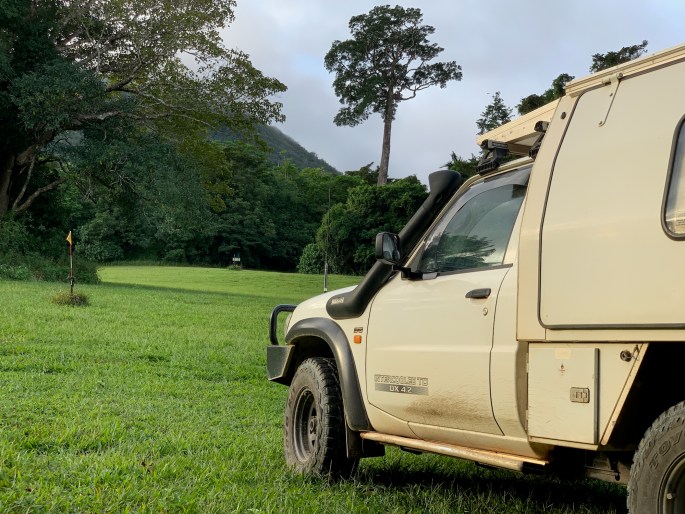
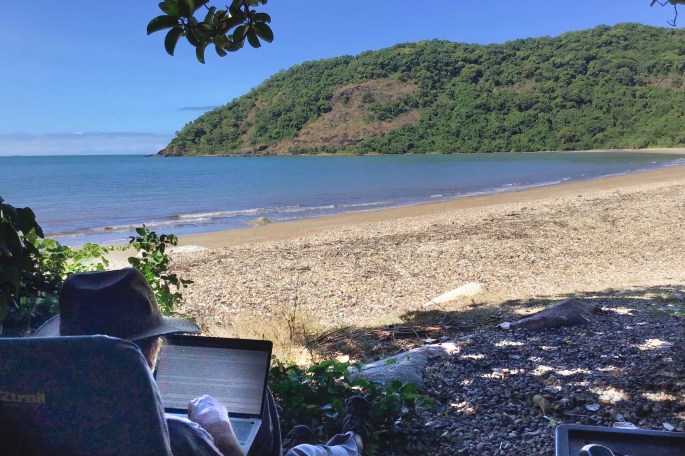


Loving your blog and envious of your adventures
A great blog of a extremely difficult trip. You are a lot more adventurous and daring than we are.
regards
Glenn & Lyn
This is a very comprehensive guide to the Old Coach Road. We will definitely use when we want to tackle it in the future. Keep up posting new locations. Good work!
Another enjoyable Blog. Glad its you and not me.
Cheers Peter
Strewth! The video is sick-making and I wasn’t even on board. When you two are old and grey you can have fun watching it again and again.
Keep safe and keep on having fun. Love, Laurie
I freaked out on some of the 4wd tracks on Lorella Springs. My heart was in my mouth reading your adventure along the OCR. Very pleased to read you got through without too much damage. Looking forward to the next instalment.
Great read as always Ian. So glad you made it through that track safely. Wow what an adventure, I don’t think it’s something I would want to do.
Take care ..looking forward to the next instalment.
Yep great photos Cuppa, and thanks for “having me in mind” however I’m sure others also will love seeing the old cars and trucks etc too.
Well done doing the Old Coach Road, it does look fairly gnarly in places.
However I didn’t hear of any staked tyres, or rocks tearing tyres from their rims, and not even one ‘rollover’, you guys weren’t even trying hey! 😉
You guys have off road vehicles, yet you never even went ‘off road’, you were on a road the whole time!! lol
To be honest, now that I’ve see it, as for myself, I would not even try that ‘road’, it would be too hard on my vehicle, and too remote and costly for recovery if I broke something critical.
I have an idea how you feel now though having done it, thrilled to have done it, but nothing would entice you to do it again hahaha.
A really great read and you two are having a adventure of a lifetime and good luck to you both
Great Yarn as always, Love the adventure you are having
Love it. Such beautiful country and seldom seen.
You really have earned your stripes on that track.
Glad to hear you are OK and enjoying the fruits of your labour.
Stay safe,
Peter & Steph.
Great writing as usual love your work keep enjoying the life and stay healthy both of you